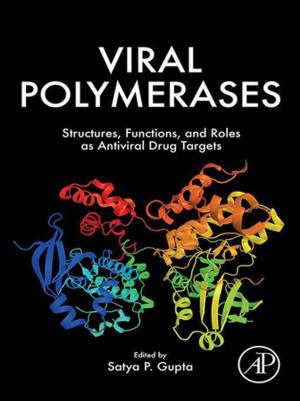In Situ Molecular Pathology and Co-Expression Analyses
Nonfiction, Science & Nature, Science, Biological Sciences, Human Physiology, Genetics, Health & Well Being, Medical| Author: | ISBN: | 9780124160019 | |
| Publisher: | Elsevier Science | Publication: | February 7, 2013 |
| Imprint: | Academic Press | Language: | English |
| Author: | |
| ISBN: | 9780124160019 |
| Publisher: | Elsevier Science |
| Publication: | February 7, 2013 |
| Imprint: | Academic Press |
| Language: | English |
In Situ Molecular Pathology and Co-Expression Analyses explains, in easy-to-understand language, simplified ways of understanding and performing in situ hybridization and immunohistochemistry tests. The book also focuses on straightforward protocols used to simultaneously detect two or more proteins/nucleic acids within intact tissue by doing co-expression analyses.
The fields of in situ hybridization and immunohistochemistry have expanded rapidly due to the use of computer-based analysis. To get the most out of these automated platforms, researchers and diagnostic biomedical investigators must have a solid understanding of the basics of in situ-based tests, protocols, and regimens for troubleshooting.
Practicing molecular pathologists, clinical chemists, and toxicologists, as well as clinicians and researchers in training, will benefit from this book's clear presentation of protocols and theoretical framework.
- Includes over 200 easy-to-follow experimental protocols
- Features chapter-ending summaries of "Key Points to Remember" to bring beginners up to speed with any seasoned veteran in the field
- Offers two chapters written by industry leaders in the fields of in situ hybridization, immunohistochemistry, and computer software for co-expression analyses
In Situ Molecular Pathology and Co-Expression Analyses explains, in easy-to-understand language, simplified ways of understanding and performing in situ hybridization and immunohistochemistry tests. The book also focuses on straightforward protocols used to simultaneously detect two or more proteins/nucleic acids within intact tissue by doing co-expression analyses.
The fields of in situ hybridization and immunohistochemistry have expanded rapidly due to the use of computer-based analysis. To get the most out of these automated platforms, researchers and diagnostic biomedical investigators must have a solid understanding of the basics of in situ-based tests, protocols, and regimens for troubleshooting.
Practicing molecular pathologists, clinical chemists, and toxicologists, as well as clinicians and researchers in training, will benefit from this book's clear presentation of protocols and theoretical framework.
- Includes over 200 easy-to-follow experimental protocols
- Features chapter-ending summaries of "Key Points to Remember" to bring beginners up to speed with any seasoned veteran in the field
- Offers two chapters written by industry leaders in the fields of in situ hybridization, immunohistochemistry, and computer software for co-expression analyses















